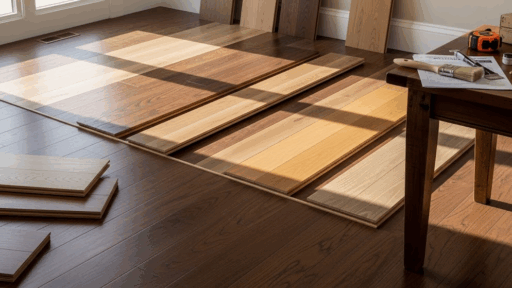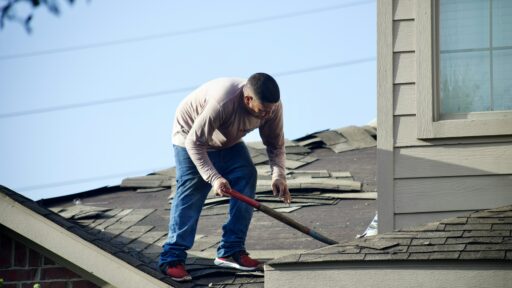One area where you should feel totally safe is your home. However, for many people, unnoticed dangers to safety and wellbeing can be serious. A few clever, easy improvements can reduce the risks that modern homes face, from antiquated locks to unseen dangers like carbon monoxide.
A complete redesign or expensive improvements are not necessary to increase the safety of your house. Your family may live in a more safe environment if you prepare ahead and make a few key adjustments. This list of doable improvements will instantly improve the safety of your house.
1. Reinforce Entry Points
The windows and doors of your house are the first points of protection against intruders. By strengthening them, the likelihood of break-ins can be considerably decreased. All external doors should have deadbolt locks installed. Consider installing smart locks to improve access control. Keep in mind that adding impact-resistant glass, window locks, or even basic security film can improve window security.
Motion-activated lights placed close to entrances serve two purposes: they increase visibility when you’re driving home at night and discourage possible intruders. Real-time monitoring and, if necessary, post-event evidence are provided by a dependable security camera system and lighting, which further enhance security.
2. Get Smoke and Carbon Monoxide Alarms Set Up
Internal hazards, particularly fire and gas leaks, should not be overlooked, even though burglary prevention receives a lot of attention. The colorless, odorless gas carbon monoxide can be lethal if ignored, and fires can spread in just a few minutes.
Putting a smoke and carbon monoxide alarm in key places around your home is one of the most cost-effective and effective safety upgrades you can make. Alarms are to be installed in kitchens, bedrooms, hallways, and next to any equipment that burns fuel.
Devices that combine CO and smoke detection in one unit, such as the X-Sense SC07-MR, offer dual protection. In the event of an emergency, these detectors’ integrated voice alarms and networked technologies provide dependable, timely warnings to assist residents in making a swift evacuation.
Selecting a detection system should involve looking for units that satisfy contemporary safety regulations and are produced by trustworthy companies like X-Sense, which is well-known for producing cutting-edge, dependable home security equipment.
3. Keep Dangerous Things Safe
Many everyday items can be hazardous if improperly stored, particularly in households with children or pets. Medication, cleaning materials, sharp tools, and even some houseplants should all be kept in secure, kid-proof locations.
To keep dangerous materials out of reach, use cabinet locks, magnetic safety latches, and high storage locations. To ensure nothing hazardous is left unattended or in plain sight, it’s also a good idea to audit your home on a regular basis.
4. Enhance the Stairs and Walkway’s Safety
One of the main reasons for injuries in homes, especially for elderly people, is falls. Uneven staircases, cluttered walkways, and dim lighting can all result in accidents that are totally preventable.
All staircases should have sturdy rails and non-slip treads. Enough lighting should be installed along stairwells and in corridors; motion sensor lights are especially useful in places where there is little activity. To prevent tripping, cords should be tucked away, and rugs should be secured with anti-slip padding.
5. Be Prepared for Anything
Being prepared is essential in any emergency. Every home ought to have a simple emergency plan that includes the following:
- Ways to evacuate
- Contact numbers for emergencies
- A central location for events held outside the home
- Emergency kits including basic supplies like non-perishable food, water, flashlights, batteries, and first aid
This approach should be regularly reviewed by all members of the home. If you live in an area that is susceptible to specific disasters (such earthquakes, floods, or wildfires), make the necessary adjustments to your equipment and procedures..
Additionally, make sure the batteries in your smoke and CO detectors are either new or replaced per manufacturer recommendations, and that they are inspected each month. Some modern alarms, such as those manufactured by X-Sense, require less maintenance and offer long-term peace of mind because they have 10-year sealed batteries.
6. Analyze Safety Improvements for Smart Homes
Additional protection can be offered by smart home appliances with the convenience of automation and remote access. Smart doorbells, leak monitors, and even stove shut-off devices can help prevent accidents before they become serious.
Although technology can greatly increase your ability to keep an eye on and manage your home’s security, it shouldn’t replace manual safety protocols or common sense.
Final Remarks
A safer house begins with awareness and a readiness to make minor changes. You may drastically lower daily dangers by guarding entrance points, setting up efficient alarms, controlling internal hazards, and using a few strategically placed smart devices.
Protecting people is as crucial to home safety as protecting belongings. You and your loved ones can live with peace of mind tomorrow if you make small, dependable changes now.








